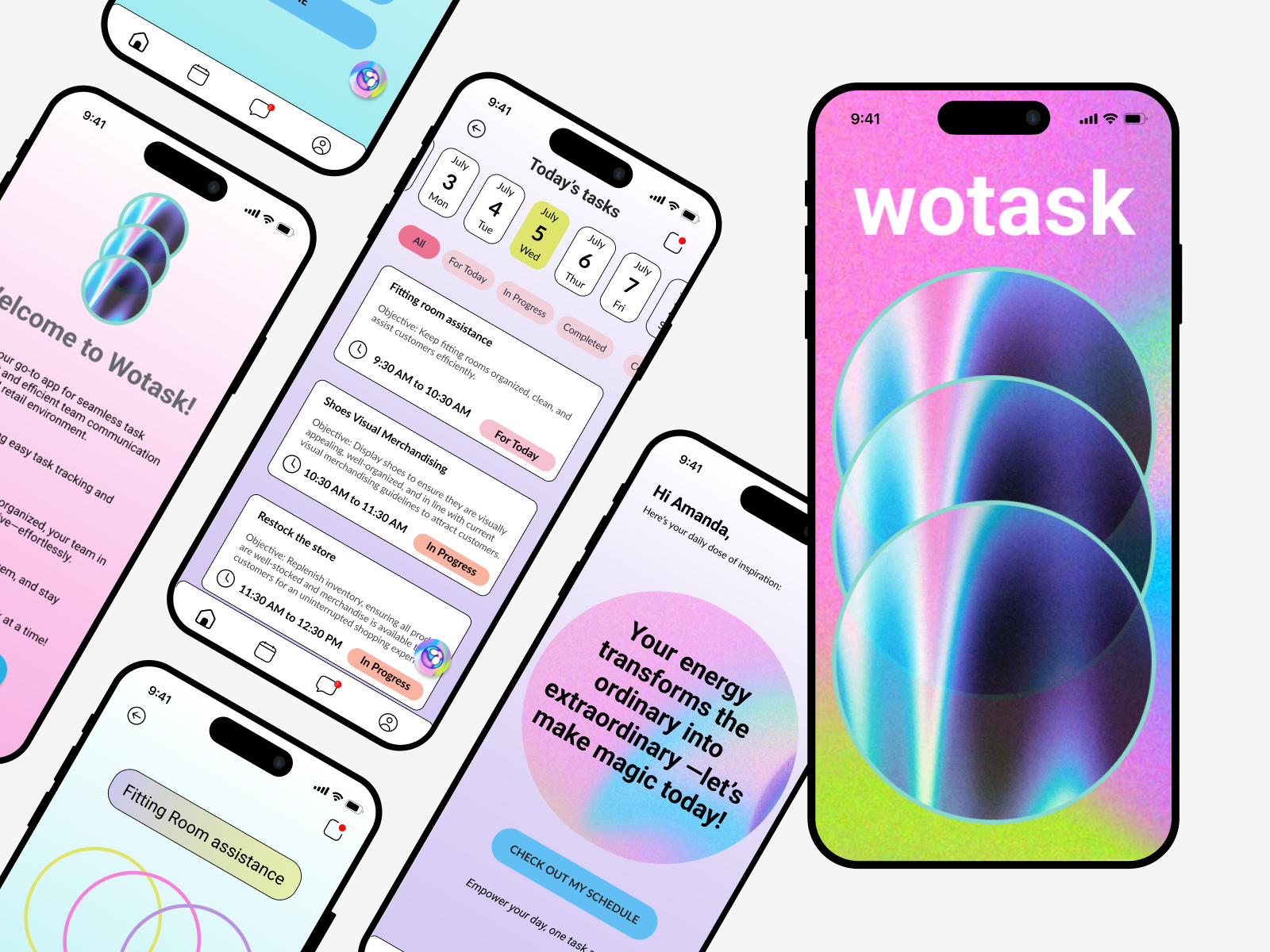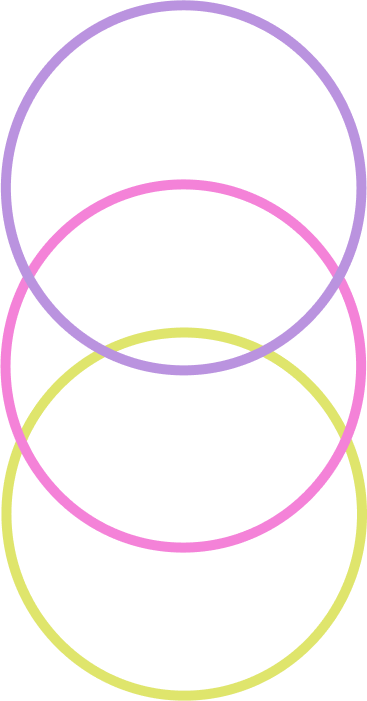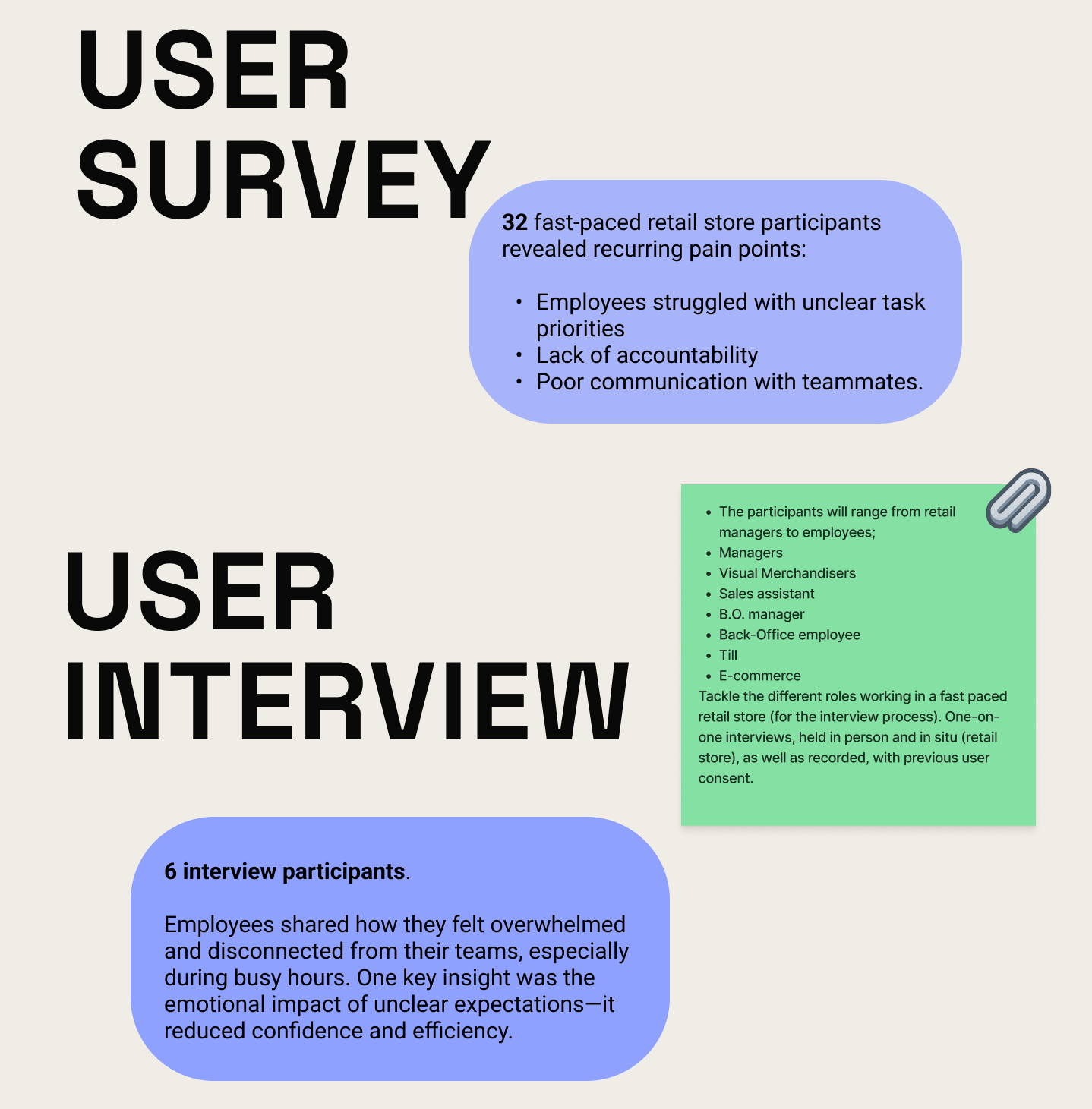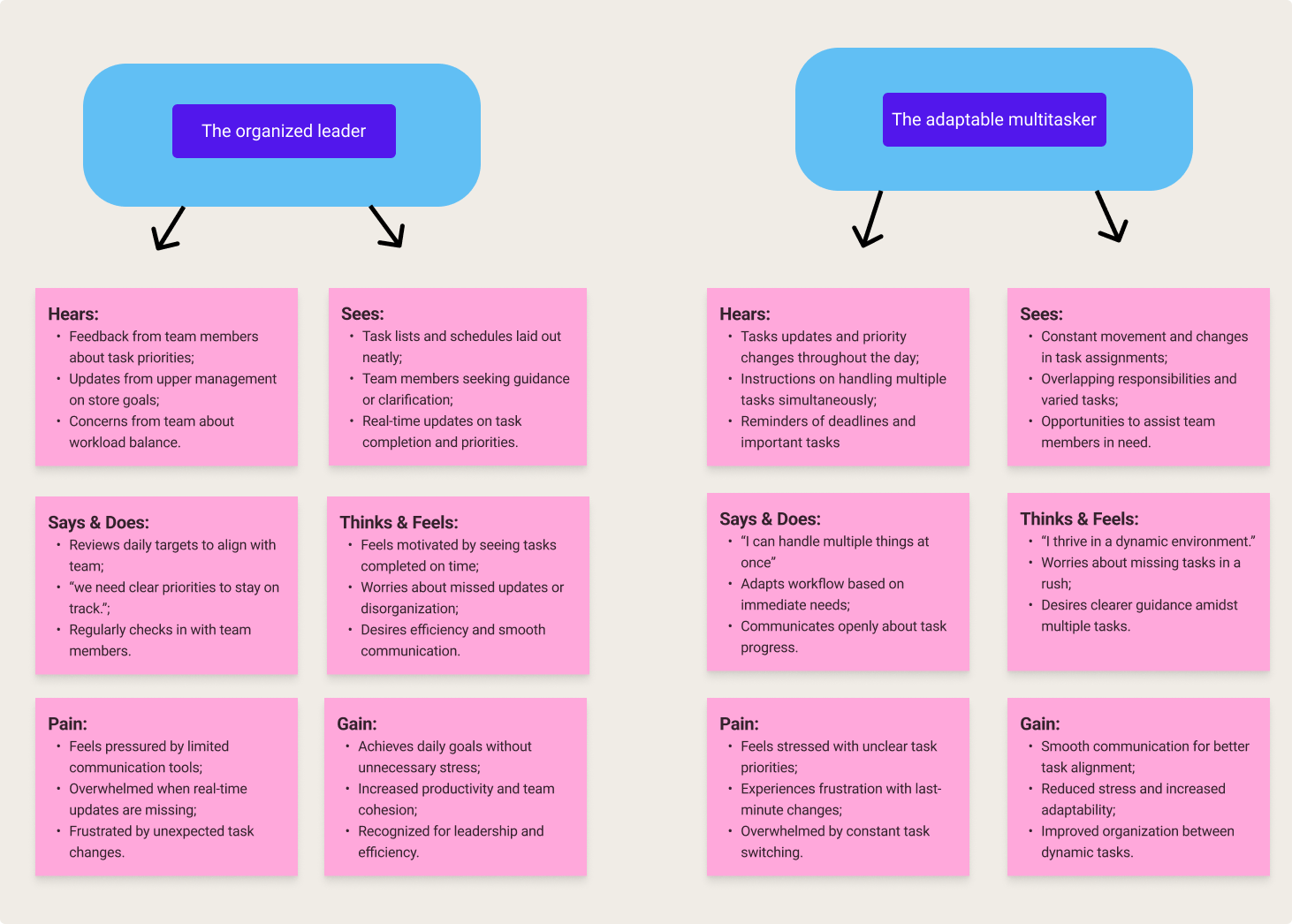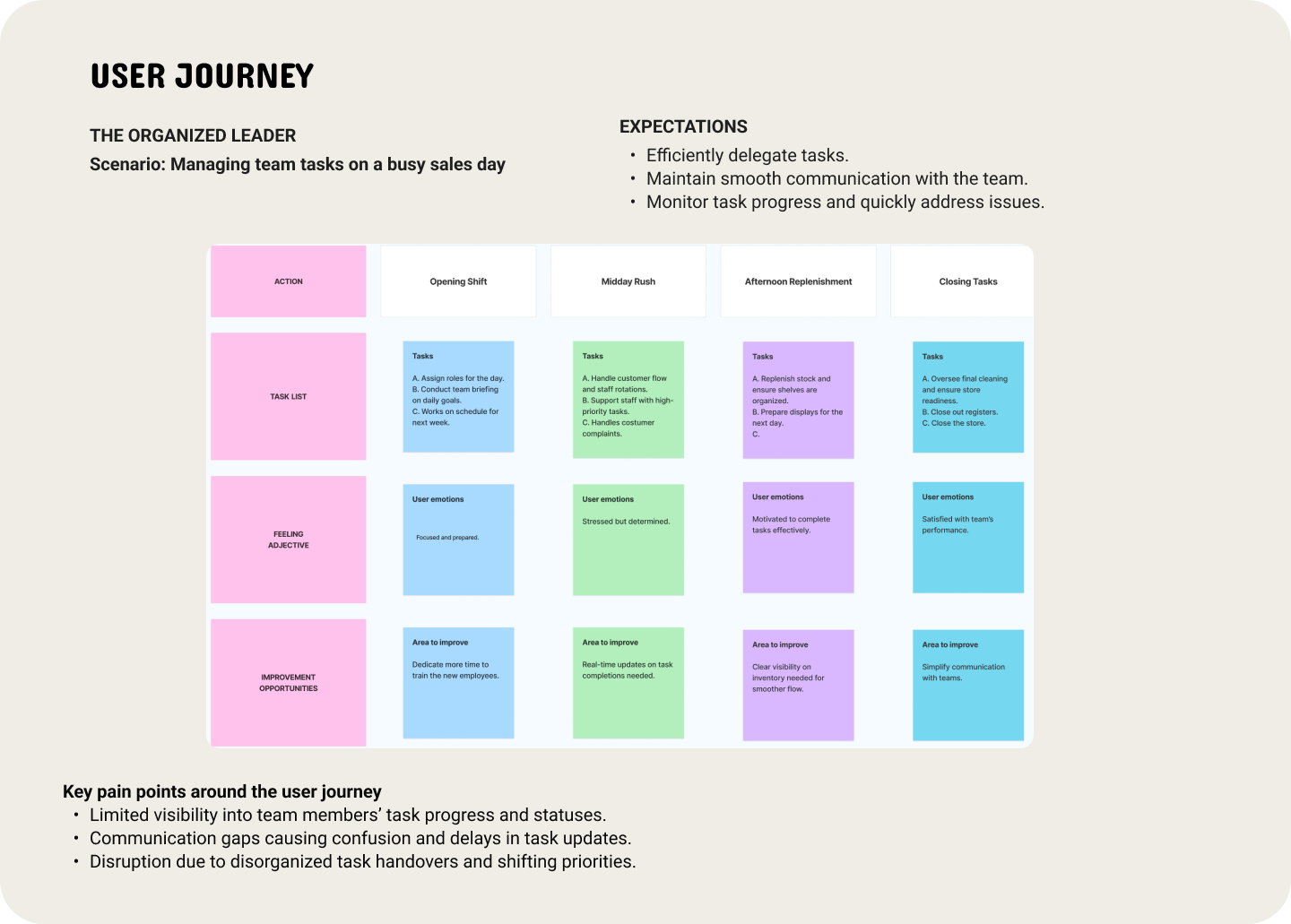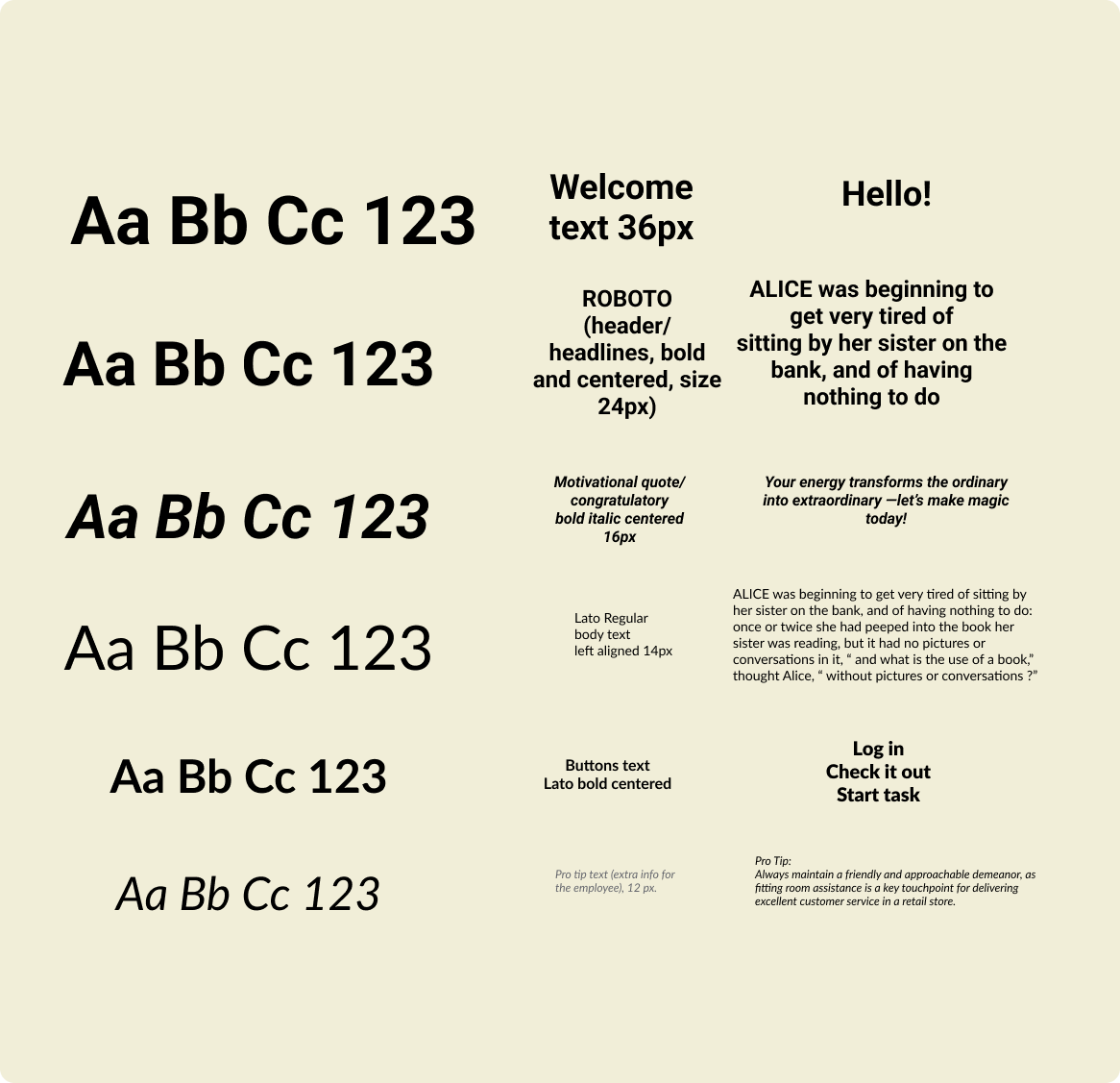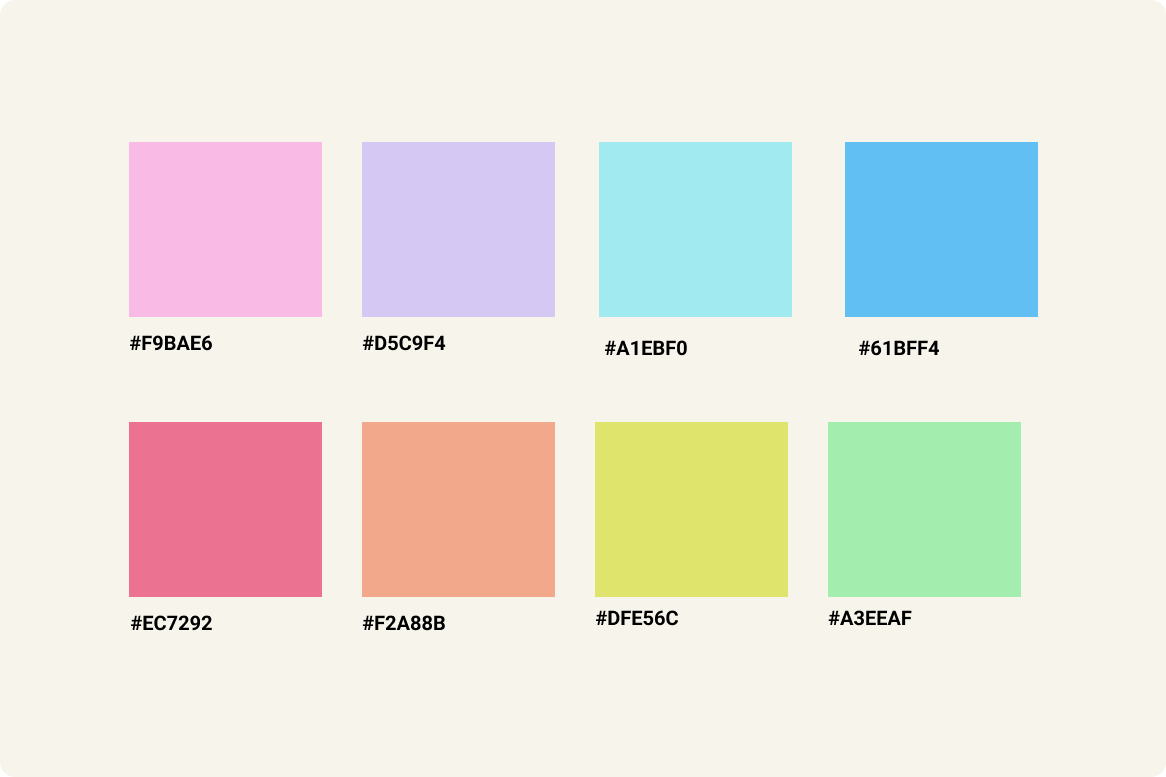
Let's make magic together - one task at a time!
Let's make magic together - one task at a time!
Let's make magic together - one task at a time! Let's make magic together - one task at a time!
wotask
#uxuidesign #taskmanagement #retail #taskefficiency #communication
UX/UI Bootcamp
allWomen.tech, 100hours in 10 weeks, Certification
My Role
Benchmarking, User Research, Ideation, UX/UI, Copy writing, Visual Design, Branding, Prototyping
Project Tools
Figma, Figjam, Google Forms, Dovetail, tl;dv AI Meeting Assistant, Mobbin, Dribble
Languages
English, French, Spanish
Design Challenge
How might we ensure employees have clear and accessible task information to reduce misunderstandings, workload stress, and enhance efficiency?
Problem Overview
Wotask is a task management and communication app for fast paced retail environments. In this specific project, I focused on the time and pressure employees of fast paced retail environments go through everyday.
As I embarked on a journey to tackle this challenge, I followed the Design Thinking process that allowed me to remain focused on the user while iterating my ideas. This journey was guided by five key stages.
Understand user needs, their challenges and frustrations.
Get to know their real pain points.
Competitive analysis.
Hypothesis, research questions.
Interviewing users.
Insights to clearly identify the core problems that needed solving.
Archetypes and empathy maps.
User journey.
Information architecture.
User flow.
Wireframing.
Interactive prototype.
Design system.
How might we.
Brainstormed and sketched possible solutions, focusing on how I could empower the employees.
Usability testing.
Implementing feedback.
Research Phase
Research Plan
In this phase of the project, I set goals to define my research and dig deeper to understand the struggles and frustrations of fast-paced retail employees. Therefore, I implemented three main goals:
- Understand why there is inefficient task management in a fast paced retail store;
- Understand the structure and communication process between managers and employees;
- Which tools could best support retail store teams in managing shifting priorities.
Methodologies
- Benchmark Analysis: Key Findings
Inadequate Existing Solutions: Current tools lacked features tailored for fast-paced retail environments.
User Experience Issues: Many existing platforms were not user-friendly, leading to low adoption rates among employees.
Opportunity for Innovation: There's a clear gap in the market for a solution that addresses both task management and effective communication.
- Quantitative Survey: Key Findings
Limited Visibility: Employees reported challenges in tracking task progress, leading to missed deadlines.
Communication Gaps: A significant number of respondents felt that unclear communication from managers affected their productivity.
Desire for Centralization: There was a strong preference for a centralized system to manage tasks and communications.
Archetypes for The organized leader and the adaptable multitasker
- User Interviews: Key Findings
Overwhelming Workloads: Employees often felt overwhelmed due to juggling multiple tasks without clear prioritization.
Lack of Feedback: Many expressed a need for regular feedback to understand performance and areas of improvement.
Preference for Digital Tools: Interviewees showed interest in digital solutions that could streamline task management and communication.
Empathy maps for the Organized leader and the Adaptable multitasker.
User journey for the archetypes: The organized leader and The adaptable multitasker.
These pain points highlight the need for a centralized, intuitive platform that provides clarity, real-time updates, and adaptability to streamline workflows and boost confidence.
solution Phase
In the ideation phase, I leveraged the 'Jobs-to-Be-Done' and ‘How Might We’ to align my app's design with user needs. I focused on specific scenarios retail employees face daily and framed them as actionable goals.
These statements became design drivers, guiding me to implement features like dynamic task prioritization, real-time notifications, and progressive task flows.
This approach ensured that the app wasn’t just functional—it actively empowered users to stay in control.
Jobs to be done
When priorities change frequently throughout the day, I want to receive real-time updates so I can adjust my tasks accordingly and stay aligned with team objectives.
When managing multiple urgent tasks, I want clear prioritization guidance so I can focus on what’s most critical without feeling overwhelmed.
When my workload feels unmanageable, I want task breakdowns and reminders so I can tackle them progressively and avoid feeling overwhelmed.
How might we
How might we support employees in managing workload demands and ensure task-related information is clear and easily accessible, to minimize misunderstandings, reduce stress and improve efficiency?
design direction
The design direction focused on clarity and empowerment. Using approachable typography, an intuitive layout, and motivational language, the app was crafted to inspire confidence and productivity.
brand values
The app should be easy to navigate, even for first-time users, with a clean, simple interface that helps employees quickly find the information they need without unnecessary complexity.
While designed to keep up with the speed of retail, the app should guide users through their tasks without making them feel pressured, helping them stay productive without overwhelming them.
styleguide
Components
The chosen color palette is ideal to create a soothing work environment, where employees feel empowered and at ease to accomplish their tasks efficiently.
The app should make users feel motivated and supported, not monitored or micromanaged. The tone is friendly, encouraging, and reinforcing a positive work environment.
Employees also have the possibility to resolve any questions with the virtual assistant, Wobot.
Final prototype
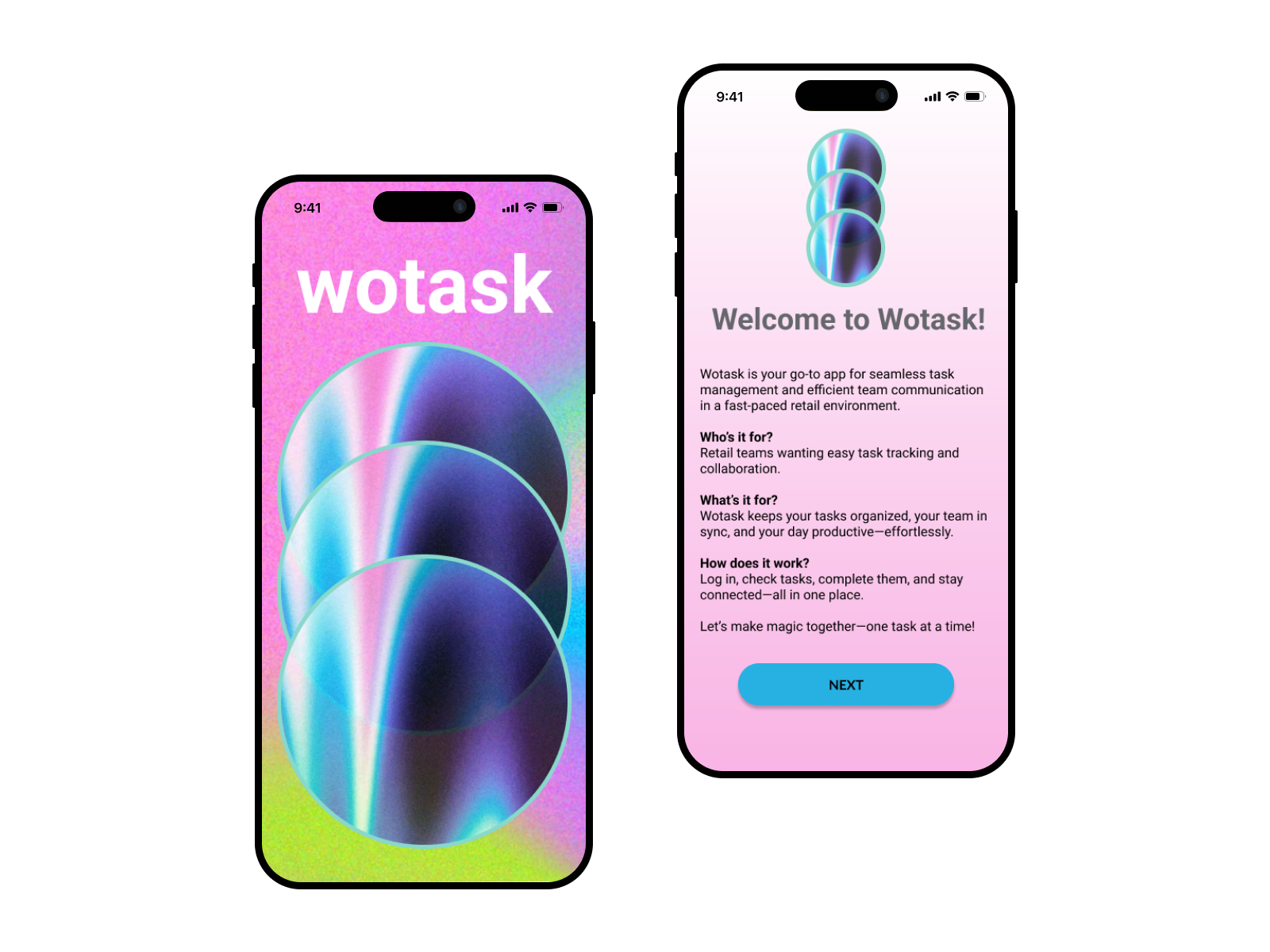


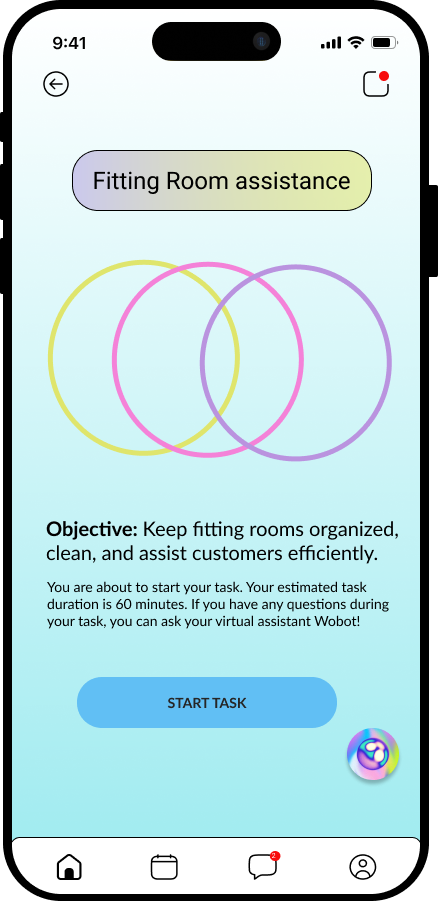


what can be improved
AI-Powered Recommendations
Explore deeper integration of AI to provide smarter task prioritization and personalized suggestions, ensuring the tool adapts to individual users' workflows.
Performance Analytics
Introduce performance insights for users, allowing them to track their progress and productivity trends, and providing actionable feedback for improvement.
Enhanced Calendar Interaction
Improve the calendar's usability by adding interactive filters or more dynamic elements to make scheduling and task-tracking more intuitive.
